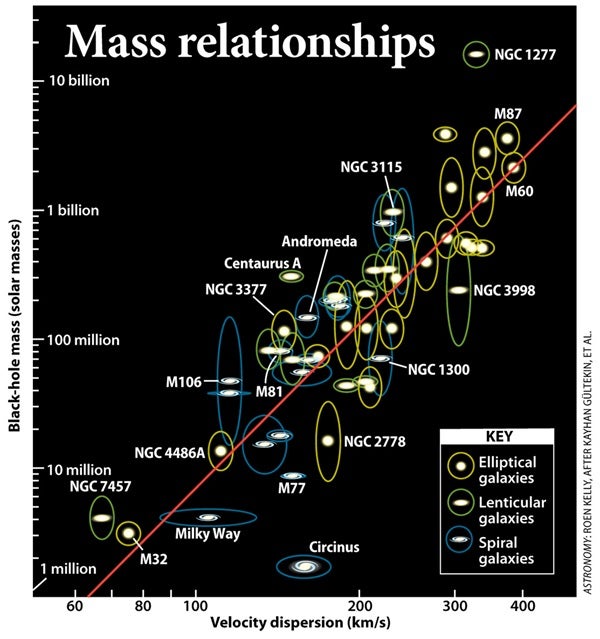We have several ways to measure the amount of stars in the bulges of galaxies. One is simply by measuring the light from those stars. Another is by determining the mass of the bulge (because it is mostly stars). In a third method, we measure the speed of the random motions of stars due to the bulge’s gravitational attraction — we call this “velocity dispersion.”
No matter which method we use, we find that the more stars in a galaxy, the larger the mass of its black hole. However, the third measurement, velocity dispersion, appears to have the tightest correlation.
We’re not sure why this correlation between black hole mass and host galaxy properties exists. One of the most compelling explanations — but by no means certain — is “quasar feedback.” In this model, when galaxies merge, their bulges also merge, and the new, larger central black hole swallows a lot of gas; as the material funnels toward the black hole, friction and radiative processes cause it to glow as a bright “quasar.” The quasar shines until its powerful winds and jets heat up and/or expel all the gas in the galaxy so that it can’t make any new stars or feed the black hole. Then, the black hole stops growing.
The correlation between black hole mass and amount of stars is not perfect. The smallest galaxies, in particular, appear to have much smaller black holes than we expect based on the amount of stars in their bulges. This could be because they never went through a quasar phase.
University of Michigan, Ann Arbor










